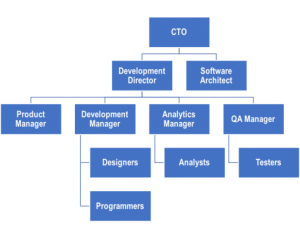
Boost Productivity – two words that form a simple statement that any organisation would aim to achieve. It’s a simple statement that is listed on many company objectives but how can you actually measure it? If it is a stated objective – how do you determine that you have achieved what you set out to do? Some people might plan to improve productivity throughout their organisation by a set percentage. Others might determine that increased sales revenue is a direct result of an improvement in productivity throughout the organisation. No matter how it is measured, there needs to be clearer goals set to aim for rather than “I want to increases productivity”
To decide on what might improve productivity, it is perhaps beneficial to fully understand the reverse of that – what hinders productivity and from there, how can that be improved?
In any organisation with multiple departments, productivity can be hindered by a lack of information flowing between departments and each one operating in a silo from each other. Take for example, an organisation where marketing, sales and finance operate completely independently from each other. They have their own tasks and deadlines to complete. They also have their own systems to process information and data. There will be times, however, when each one relies on the other for their deadlines to have been met and systems and information to be updated. How can each one be certain that the other one has done what they were supposed to if they are working in isolation? To put this into a more practical working example. Consider the following:
Marketing work on the first stage of the process, promoting your products to attract enquiries and customers. In most cases they will use a database of contacts to promote your product offering. A CRM system. Regardless of the tools of promotion, whether you utilise email or good old fashioned direct mail via the postal system – you need contacts. You also need to add to that contact list regularly to keep the data fresh and ensure you aren’t sending the same material to the same people all of the time. What happens when someone takes notice of all of that good promotional work and wants to discuss your products and / or services? This is then passed onto the sales department. How is that done?
What happens with the information when sales take on an enquiry and begin to try and turn this into business? If there are strong links between sales and marketing, then all relevant details on what promotional campaigns have been sent, what they have engaged with and all contact details within the organisation that are known will be passed onto sales. If these departments are relying on different operational systems, then the information will be passed on manually and there could be a requirement to re-key data into another system. This can become complex and create issues when sales and marketing don’t work closely together. The situation is complicated even further if the sales team are out on the road and don’t have access to operational systems in real time. The marketing department also need to ensure that the contact is removed from promotional work while sales are engaged with them. With no linkages in processes and systems, the information doesn’t flow easily and productivity can be hampered as a result. There are delays as people check information is accurate and up to date and pass data between each other. Nothing operates in real time in a situation such as this.
The next flow for the information is the finance department. If sales have managed to convert enquiries into sales then they need to be invoiced for payment. Potentially, this includes another system to add the contact information into, also ensuring it is the right contact person and correct billing address details for the company. With a delay in checking this information is available and the accuracy, there could be a delay in getting cash into your business.
It is clear to see that if there are departments working in isolation, on different systems, there can be a drop in productivity levels at the point of transferring information. The solution to this is to integrate everything into one system that can be updated in real time. To make this effective in real time, the system should be accessible with the ability to be updated from any location at any time. The recommendation being that productivity can be maximised with a cloud-based integrated operational management solution.
The first step in ensuring information flows between departments is to integrate systems, this breaks down barriers and silos of information in the first instance. However, to have all departments fully operating in real time, everyone needs to be able to access and update these systems from anywhere at any time, particularly in an organisation with a mobile sales force. This requires a cloud solution.
The benefits of this are huge. Consider the opposite of everything I have outlined here. The marketing department have a database of contacts who can be targeted with their promotional work, when the contact responds and enquires about your products and services, you are able to pass the information directly to the sales department quickly and easily by reassigning the contact to sales to pick up on and in the meantime, they can be removed from your marketing activity. As sales work on closing the deal, they can keep the same records up to date that marketing had been working with, ensuring they know all the details of all contact that has been made prior to them becoming involved. When they do close the sale, they can change the status of the contact to customer and this is then easily passed onto finance to invoice. A smooth transition between every touch point of a prospect to a sale and beyond is captured in real time, in one system and accessible by everyone from any location at any time. There is a record of historical data from first point of contact to becoming a customer and beyond – I have only outlined marketing to sales to finance here but there is after sales support and customer service to take into account as well and all of that can be managed in one system with a single source database for your business.
When companies are small it is easier to maintain communication channels across different functions. With growth this becomes a bigger issue and harder to achieve. Integrating business information systems is one way in which this can be avoided and ensures staff are productive as they are not wasting their time chasing information that could be readily available. They are spending their time on the right tasks because the information they need is available when and where they need it.
I started this blog by stating that a goal of many organisations would be to boost productivity. I then explored what can hamper productivity by outlining the silos and barriers to free flowing information across an organisation. Has it made you think? Are you currently experiencing any of the issues I have outlined? I would love to hear your thoughts on this. Developing integrated processes and systems isn’t just the latest buzzword fad to consider now – it is also about the future of your business. I will explore the topic of future proofing your business in my next blog.
Business & Finance Articles on Business 2 Community(47)





